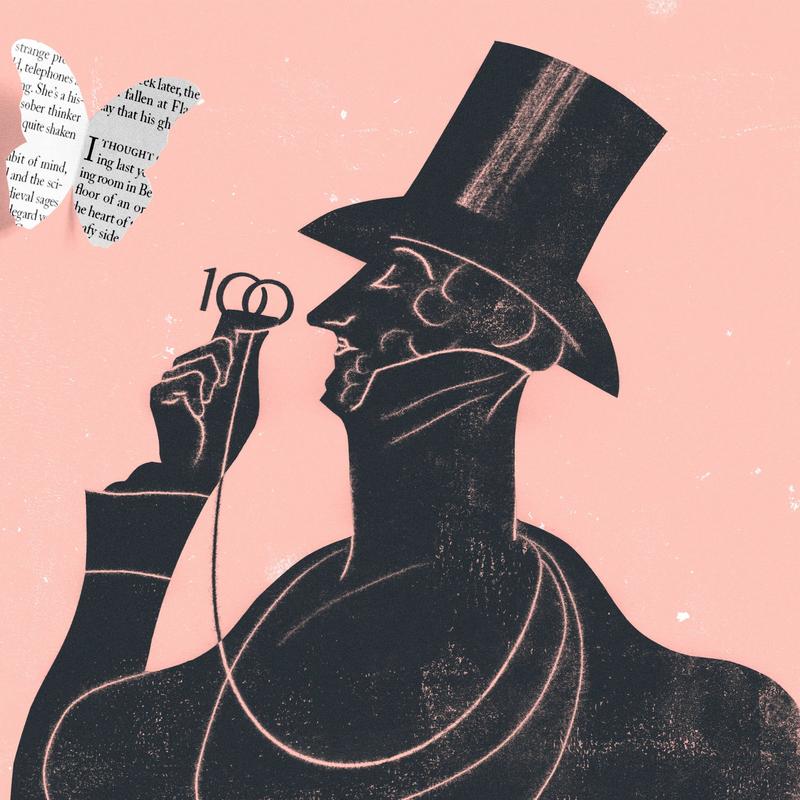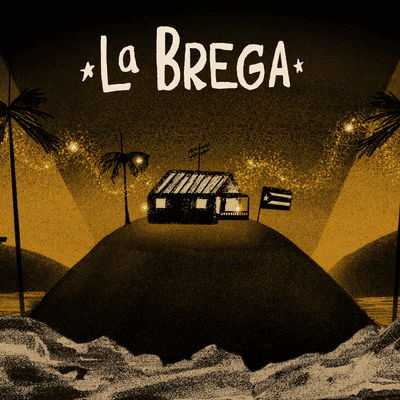Celebrating 100 Years: Jia Tolentino and Roz Chast Pick Favorites from the Archive

David Remnick: This is The New Yorker Radio Hour. I'm David Remnick. Listen, I am not one for anniversary journalism or even birthdays. You reach a certain age and it's hard to remember what all the fuss is about. When you reach 100, at 100, you get to make a fuss. The debut issue of The New Yorker magazine appeared on newsstands dated February 21st, 1925. Throughout this year, we're going to be celebrating the centennial in many ways, and one of them is to highlight a few of the gems from The New Yorker's archive.
We've asked some of our writers to pick a piece that means something special to them. We'll start off today with Jia Tolentino, who's the author of the best-selling book Trick Mirror. Jia picked a story by one of the great genius observers of American life, the late Joan Didion.
Jia Tolentino: Joan Didion, one thinks of the Stingray, the mohair throw, and the typewriter, bloodshed in Laurel Canyon, the decaying Summer of Love. It's always a surprise to remember that the neurasthenic empress of American nonfiction once turned the terrifying gimlet of her attention to Y2K-era fan blogs and Kmart cake toppers for a defense of Martha Stewart.
Joan Didion: The dreams and the fears into which Martha Stewart taps are not of feminine domesticity, but of female power, of the woman who sits down at the table with the men and still in her apron, walks away with the chips.
David Remnick: Joan Didion's essay on Martha Stewart, read for us by an actor. I'm here with staff writer Jia Tolentino. Jia, tell me why you picked this story out of so many thousands that we've published over 100 years. Why Joan Didion and why this piece about Martha Stewart?
Jia Tolentino: This was published in the year 2000, and three years later, Martha Stewart gets indicted for securities fraud. Four years later, Joan Didion starts writing The Year of Magical Thinking.
David Remnick: Her memoir about losing her husband and daughter.
Jia Tolentino: Yes. Their entire 21st-century image is defined by things that have not happened yet but are almost about to happen when this piece comes out. I find it just this amazing thing that exists.
David Remnick: It remains surprising to me that she decided to take this on.
Jia Tolentino: Wait. Actually, can you give me the goss? Can you tell me how did it happen?
David Remnick: I think we threw ideas at Joan Didion constantly, hoping for the best, that we would get lucky once in a blue moon. For some reason, she bid on this.
Jia Tolentino: Do you think you know what the reason is when you read the piece?
David Remnick: I think when you read the piece, she's really interested in this domestic God/goddess notion.
Joan Didion: "You could bottle that chili sauce," neighbors say to home cooks all over America. "You could make a fortune on those date bars. You could bottle it. You could sell it. You can survive when all else fails." I myself believed for most of my adult life that I could support myself and my family in the catastrophic absence of all other income sources by catering.
Jia Tolentino: I think when you read this piece, you get why she accepted this assignment because she loves Martha Stewart. I don't think-
David Remnick: Did you?
Jia Tolentino: No. Both Martha Stewart and Joan Didion are fascinating figures to me that I could never feel an entire kinship with because two things. They are both perfectionists on the surface, something that I can't quite connect to. There's a real steel. There's such a genteel perfection and ease, but behind it, there's a little bit of blood. There's some sense of violence. She kills her own Thanksgiving turkeys. With Didion, too, there's this icy control and coldness behind these perfect, gorgeous impeccable sentences and surfaces.
One gets the impression, reading it, that Joan Didion connected to Martha Stewart because of this. What she was analyzing was another woman that had made a career out of flawless surfaces at a cost.
Joan Didion: To her critics, she seems to represent a fraud, to be exposed, a wrong to be righted. "She's a shark," one declares in Salon. "However much she's got, Martha wants more, and she wants it her way and in her world, not in the balls-out boys' club realms of real estate or technology, but in the delicate land of doily hearts and wedding cakes."
David Remnick: Of the pieces that Joan Didion wrote for The New Yorker, there were some reporting pieces from California. The other critical piece that she wrote was about Ernest Hemingway and about Hemingway's sentences and perfectionism of sentences.
Jia Tolentino: The defense of perfectionism.
David Remnick: Exactly. What a link between Martha Stewart and Papa Hemingway.
Jia Tolentino: It's funny, I think so much of this piece, most of the lines that Didion writes about Stuart, it's hard not to hear the echoes of people saying that about her, of people being like, "Can't you tell? She's a shark." It's almost like Didion is saying, "Yes, I know. We all know."
Joan Didion: This is not a story about a woman who made the best of traditional skills. This is a story about a woman who did her own IPO. This is the woman's pluck story, the Dust Bowl story, the burying your child on the trail story, the I will never go hungry again story, the Mildred Pierce story, the story about how the sheer nerve of even professionally unskilled women can prevail, show the men, the story that has historically encouraged women in this country even as it has threatened men.
David Remnick: Jia, you mentioned that Martha Stewart hit a bump, shall we call it? She was convicted on charges related to insider trading investigations, and she spent several months in prison. When she got out of jail, she rebounded like crazy. Could Joan Didion have written the same profile of Martha Stewart just a few years later?
Jia Tolentino: I'm so glad that she didn't. It would have been much more complicated. That's why this piece is so good, is this piece can just be about the question of image versus reality, perfectionism versus the price you pay for it on the inside, which is this current running underneath it. It's a question of a woman that is succeeding on a woman's terms with ambition that can outpace that of any man. What do you make of it? What do you call it? How does that woman herself understand it?
How do other people relentlessly misinterpret it? It's nice that it can just be about that. It can be about image versus what's under it. Didion ceded the best line in her piece to an anonymous Internet user who wrote about Stewart in a summation that could be applied to both.
Joan Didion: She seems perfect, but she's not. She's obsessed. She's frantic. She's a control freak beyond my wildest dreams. That shows me two things. A, no one is perfect, and B, there's a price for everything.
David Remnick: That's from Joan Didion's essay on Martha Stewart headlined Everywoman.com. Excerpts were read for us by actor Amy Warren, and Jia Tolentino wrote about Didion's essay. you can find both pieces at newyorker.com/takes. That's newyorker.com/takes, T-A-K-E-S.
[MUSIC]
David Remnick: We also asked the cartoonist Roz Chast for her take on the magazine centennial. Roz wanted to write about one of her illustrious forebears, the late George Booth, who contributed cartoons to The New Yorker for decades and decades, half his life or more. Booth is known for his dogs. He was for sure the world-champion dog cartoonist, but that doesn't really do justice to him as an observer of us humans. Like Roz Chast herself, George Booth drew a world full of stressed-out schlumpy people dealing with the weirdness of everyday existence. Here's Roz Chast.
Roz Chast: A woman is having a yard sale. This front lawn and the side lawn are just covered with crap, busted washing machine, chair that's like all in tatters, maybe some exercise machinery, and a million bottles. Just like what you see when somebody has a particularly large and junky yard sale. This couple is looking and the caption is, "There's more inside." [laughs] Oh, God, it's just so great. Oh, there's tires. George Booth was a beloved cartoonist for The New Yorker for many decades. I think George Booth brought a different world into The New Yorker cartoons. It was definitely not New York. It was definitely not so-called sophisticated people going to the theater or wearing fashionable clothing or anything like that.
They were from a small town, someplace in the United States, just going about their very strange business of grocery shopping or taking baths or some situation where a miniature horse is running around the living room for some reason. One of the things that I love about George Booth's cartoons are the drawings themselves and the attention to all of the details that set the stage for the joke. One of my favorite examples of this is this cartoon of his of this father in a car with his two doofusy sons crammed all into the front seat.
They're in a parking lot of a grocery store. Meanwhile, the mother, her grocery bag has dropped on the ground. Everything is rolling away. The bag tore. The grocery cart is smashed into a parking meter and two rabid-looking dogs are barking at her. There's clearly this post-grocery store crisis going on. The father is saying to the sons, "One of you boys go help mom with the groceries." It's just the greatest drawing. George and I met in the offices at The New Yorker I'm guessing it was sometime in the mid-80s. Back in the day, people brought their work in in person.
That's when I met George Booth. He was tall and goofy-looking. He reminded me of his cartoons. I was in awe of him because I had loved his cartoons for so many years. I have to say that when I first started, some of the old guys didn't want to talk to me. I think maybe because I was very young, maybe because I was female. Maybe I think also they didn't like my work. It was just too different from what they were doing. George was always nice and he was a great laugher. He laughed at his own stuff, he laughed at other people's stuff.
He was so true to himself from the beginning to the end. To me, that was encouraging. It was like you follow your guide. The piece of his that just knocked me out was Ip Gissa Gul. It's a two-page episodic story. It's not just one panel with a funny line. It's an actual story about Ip. It's all in this caveman dialect that he made up. The first panel is this caveman with his friends and Ip is saying, "Hom wompa gul." He wants a girl. First, he pets this creature with spikes on his back and he says, "Ass nop gul tissa hig." Then, the next panel, he's looking at some giant, it's a mini dinosaur or a giant lizard, I don't know, "Ass nop gul tissa izzard." Then he sees a girl and he goes, "Schnort". She's looking at him like, "What is happening?" The girl just starts throwing rocks at Ip. "Dassa Krok-Tron gul." Clear from reading it, it's a rock-throwing girl. Her arm is just windmilling around, just throwing these rocks at this guy.
Then, he slings her over his shoulder and goes, "Hyme Ike Dassa Krok-Tron gul." He's saying, "I like that rock-throwing girl." Then, the last panel is Ip with the cavewoman person and he's patting her and he's going, "Gul." They're surrounded by little cave babies. I just loved his work so much. I loved it for its unique point of view. Always funny, never cruel, off the wall, very inspiring. He was great.
David Remnick: You can find Roz Chast on George Booth, as well as Jia Tolentino on Martha Stewart by the great Joan Didion, and much more at newyorker.com/takes. You can subscribe to The New Yorker at our website as well, newyorker.com. We'll be sharing many more takes on The New Yorker centennial in the weeks to come.
Copyright © 2025 New York Public Radio. All rights reserved. Visit our website terms of use at www.wnyc.org for further information.
New York Public Radio transcripts are created on a rush deadline, often by contractors. This text may not be in its final form and may be updated or revised in the future. Accuracy and availability may vary. The authoritative record of New York Public Radio’s programming is the audio record.





